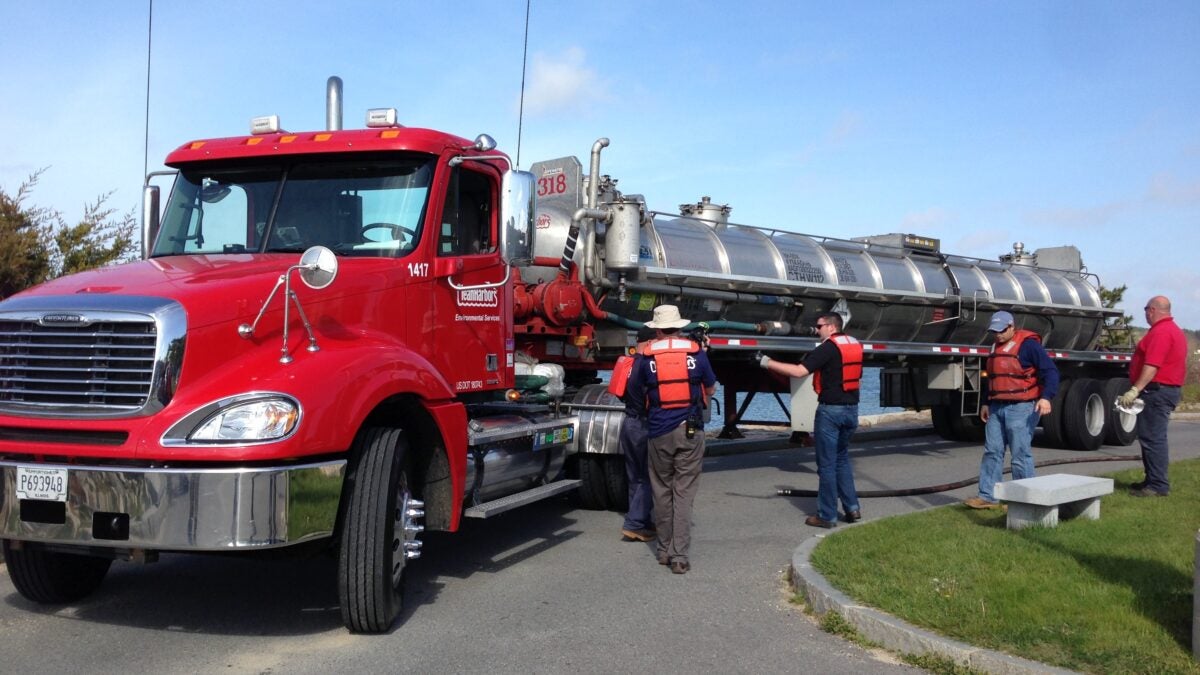Most people know about large oil spills in the ocean such as the Exxon Valdez or Deepwater Horizon disasters, but smaller spills on land and in water occur every day. The reporting, response, cleanup and restoration processes have improved with technology and lessons learned.
But logistical challenges remain. Among them, experts have to decide when to halt cleanup efforts that may be doing more harm than good.
Companies must have contingency plans with oil spill response organizations (OSROs) in place and crew members who are ready to put those plans into action, whether it’s at 10 a.m. or 2 a.m. That comes with a cost.
The Oil Pollution Act of 1990 (OPA) holds the entity that spills oil responsible for funding cleanup and restoration efforts.
OPA is a “regulatory success story,” according to Doug Helton, regional operations supervisor at the National Oceanic and Atmospheric Administration (NOAA). “It removes the question of who pays right away, and it helps to focus on the environmental cleanup instead of the litigation initially.”
He said there has been a “huge reduction” in the number of major spills since OPA was enacted. The number of large oil spills per year worldwide fell from 24.5 in the 1970s to 1.8 in the 2010s, according to Our World in Data.
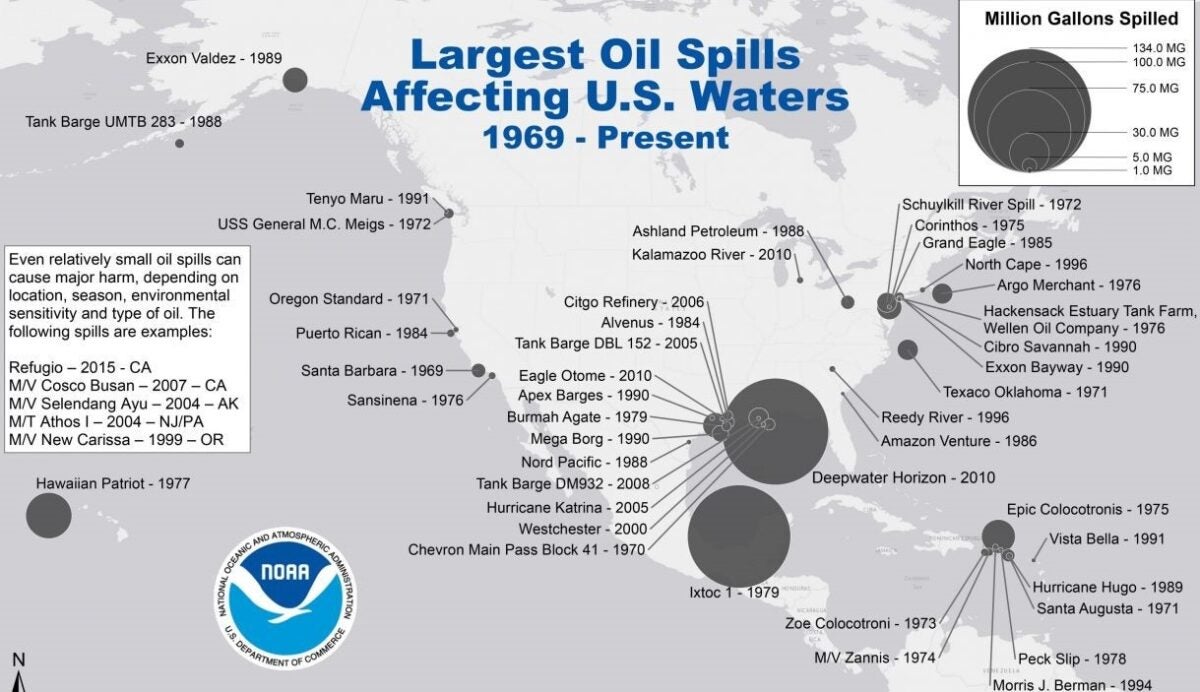
Causes of oil spills include accidents with:
- Pipelines on land or underwater.
- Trucks transporting oil.
- Oil rig explosions.
- Colliding ocean vessels.
- Vessels running aground.
“The cargo freight industry is not the biggest threat from spills. The bigger threat is tank barges — vessels that are designed to carry oil as cargo, not as fuel,” Helton said. There are fewer issues with oil tankers running aground thanks to improved navigation and GPS systems.
Effective oil spill response requires rapid reporting and cleanup efforts followed by more in-depth environmental damage assessment and restoration efforts.
Water-based cleanup methods
Large or small, oil spills in oceans, rivers, lakes and tributaries require agile crews, ample equipment and fast response times.
A small spill in a pond may require fewer than a dozen people, but the crew size depends on the habitat, amount of oil spilled and movement of the oil, Charles Geer, senior vice president of field services at Clean Harbors, told FreightWaves.
Environmental and industrial services provider Clean Harbors has had more than 3,500 people working on one large pipeline oil spill.
In moving water such as a river, “The longer you take to respond, it creates the disaster farther and farther along” for foliage and marine life, Geer said. “Speed is your friend,” and the first two or three days are critical for cleanup efforts.
With winds and water currents, Helton said it would be normal for oil to move 10 to 20 miles in one day. It “doesn’t stay a localized problem” as the layer of oil on the water gets thinner and spreads out quickly. “A gallon of oil could easily cover 4,000 to 5,000 square feet on the sea surface. It really spreads out rapidly,” Helton said.
Floating booms are set up to gather oil on the water surface. Skimmer boats can then be used to skim the very thin layer of oil off the water and empty it into tanks brought on-site.
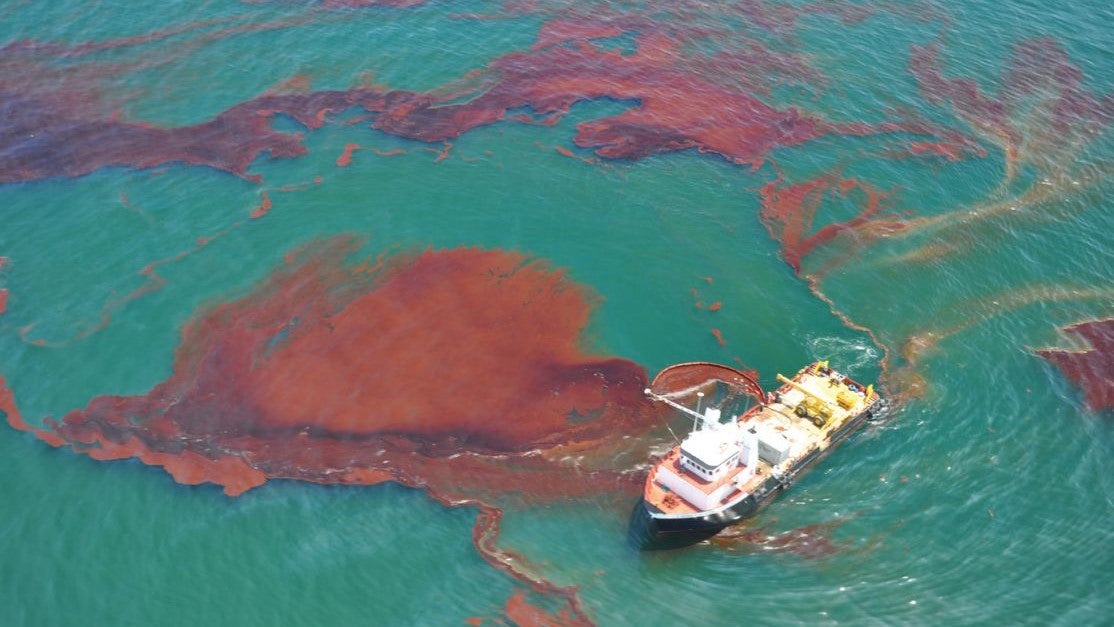
Companies that spill oil and do not notify authorities quickly can be held to a higher level of responsibility for damage caused.
To speed response times, companies are required to have oil spill contingency plans in place. Helton said that at least three OSROs are available for contracts around most major ports in the U.S.
Companies pay a premium for annual access to networks of OSROs, Helton said. Geer said there is a cost to having crew members ready to respond to a call at 2 am.
Contingency plans have to be registered in a database with the Coast Guard. They must include the duties of all entities involved and oil removal operation procedures, according to the Environmental Protection Agency.
Many ports have pre-staged equipment such as booms and protection strategies for sensitive areas nearby.
“You’d be surprised at how much property you actually need” to store tanks, vacuum trucks, skimmers and booms near potential spill locations, Geer said. “There’s a lot of logistics involved, and [the equipment has] to be nearby; otherwise it just doesn’t work as well, or you’re spending a lot of time on the road.”
Geer said a typical storage site for oil spill response equipment is at least a few acres, so Clean Harbors works with states and counties to find land in strategic locations. He said there have to be multiple spots set up along a river in case the oil is overwhelming and spreads past initial spill zones.
One cleanup in the Midwest that Geer helped with in 2010 was 40 miles long with dozens of cleanup spots.
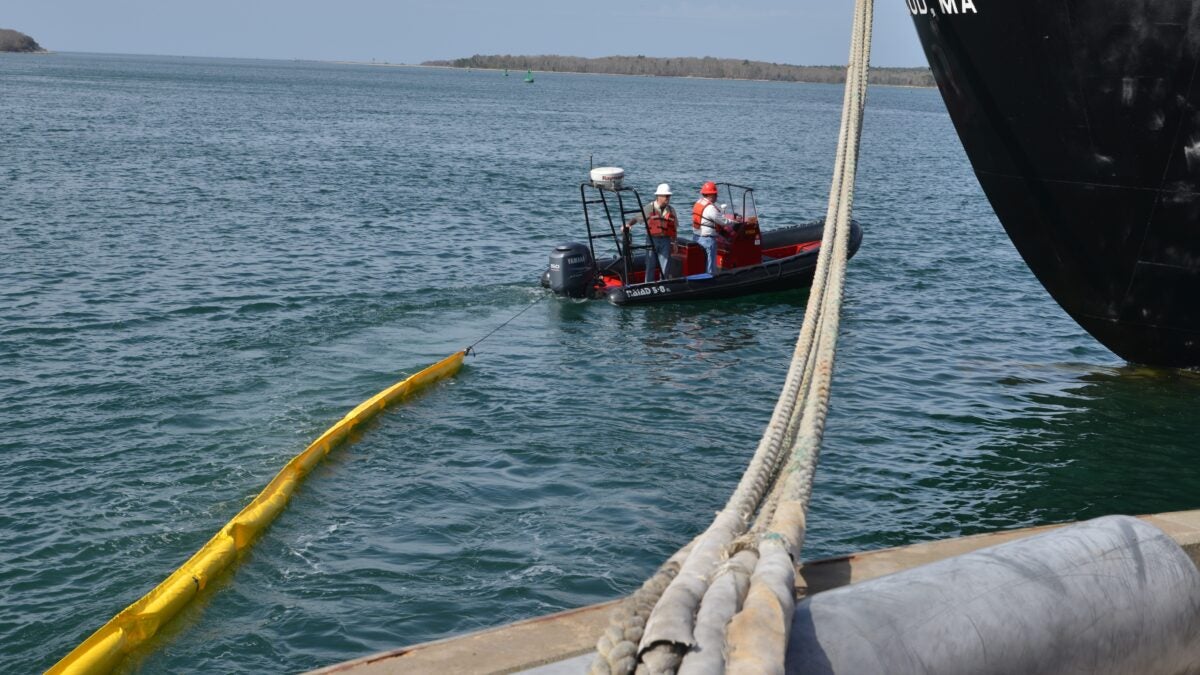
Cleanup efforts on land
Oil spills on land are more easily contained but sometimes more difficult to clean up. “You can usually keep it to a smaller area because it’s not flowing,” Geer said.
Nearly all of the oil spills Clean Harbors responds to are related to pipelines or trucking, Geer said: “When you add up all of the trucking accidents, that’s by far the most common one.”
In general, land-based oil cleanups are “a lot more time-intensive,” he said. Once oil is mixed in with soil, it’s “really physical at that point. For the most part, you remove it” using excavation equipment.
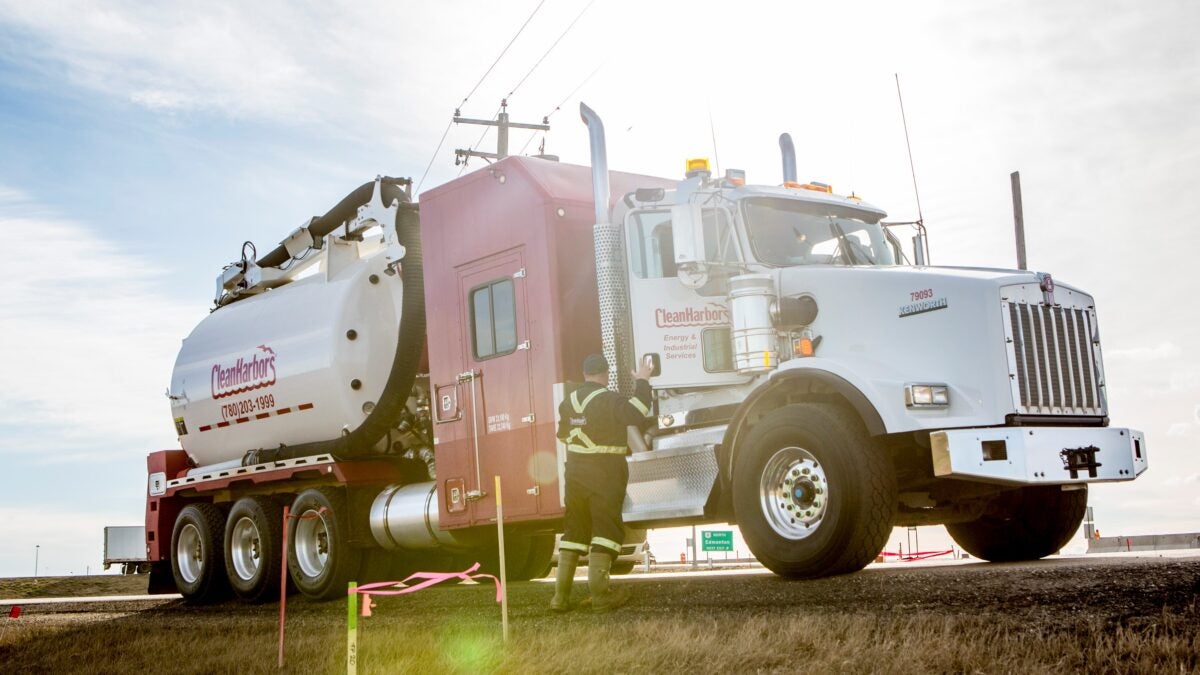
Clean Harbors crews use excavation equipment and manual labor to take off a top layer of contaminated soil. Depending on the volume of oil spilled, vacuum trucks can also be used. Vacuum trucks empty collected oil into tanks on-site when they get full so they can keep collecting oil instead of spending time on the road.
The company typically continues cleanup efforts until test results of soil samples show oil is no longer present.
Removing oil from land often takes longer than it does for water-based spills, Geer said. Trees and foliage often get contaminated and have to be removed. Cleaning oil off foliage and trees is sometimes possible, but it requires extensive manual labor and more time.
Recycling oil after a spill
Clean Harbors worked with Safety-Kleen to recycle more than 235 million gallons of used oil from retailers and automotive centers into more than 190 million gallons of recycled oil products in 2019, according to a sustainability report. However, Geer said, “What we actually do from the emergency response side is a small portion of that.”
Oil recovery and recycling is relatively straightforward when it’s collected from water. Booms collect oil, and skimmers can capture nearly pure oil from the top of the water, Geer said. The small amount of water collected can be separated using mobile water treatment systems at cleanup sites. Clean Harbors then recycles what oil it can to be reused.
With a good system and a fast response, the company can collect about 90% of oil spilled on the water, Geer said. It’s the “complete opposite on land.”
It’s “basically impossible” to recycle oil spilled on land, Geer said. “When it’s in soil, it’s very tough to get oil back out. It’s not free-standing. It’s already been coagulated with the soil.”
It depends on local regulations and the customers, but Clean Harbors typically disposes of oil-contaminated soil in nonhazardous landfills if there’s no remaining free-standing oil.
Cleanup timeline
A typical oil spill takes a few weeks to clean up, Geer said, but it depends on the severity and the volume of oil spilled. Helton said large spills such as Deepwater Horizon can take months or years to clean up.
He said the damage assessment and restoration process is a lot longer. This process, which the spiller is responsible for funding, includes long-term studies and testing to see how environments are impacted.
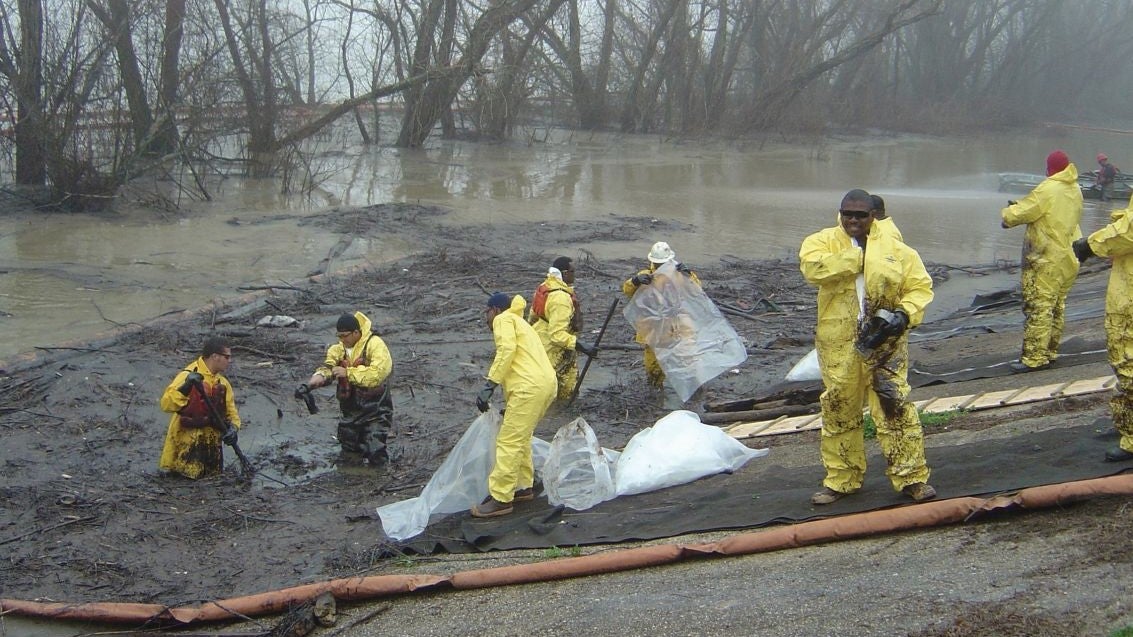
How clean is clean?
Determining when an oil spill is cleaned up enough is “surprisingly difficult,” Helton said. “The phrase we use is, ‘How clean is clean?’”
While it might seem obvious to keep cleaning until all remnants of oil have been removed, “when you clean up a spill, you can cause additional environmental harm,” Helton said. There are several trade-offs that have to be considered because cleanup efforts often disturb wildlife.
In response to the Exxon Valdez oil spill, some beaches were cleaned with high-pressure hot water hoses and others were cleaned manually. The high-pressure hoses were very effective in removing the oil, but those beaches took longer to recover from the spill than beaches that were cleaned manually and left some oil behind.
NOAA has developed some best management practices for determining when oil spill cleanup efforts should end, but it depends greatly on the habitat type and use of the area.
More aggressive cleanup techniques would likely be used for a sandy beach where kids play than for a remote gravel beach in Alaska.
Read: FreightWaves Flashback: Lessons from the Puerto Rico oil spill
Impacts on marine life
“The impacts can be extreme,” Geer said. Since most types of oil float in water, birds, frogs, turtles and other animals that spend time at the surface are often more affected by oil spills right when they happen than fish and creatures that live deeper in the water.
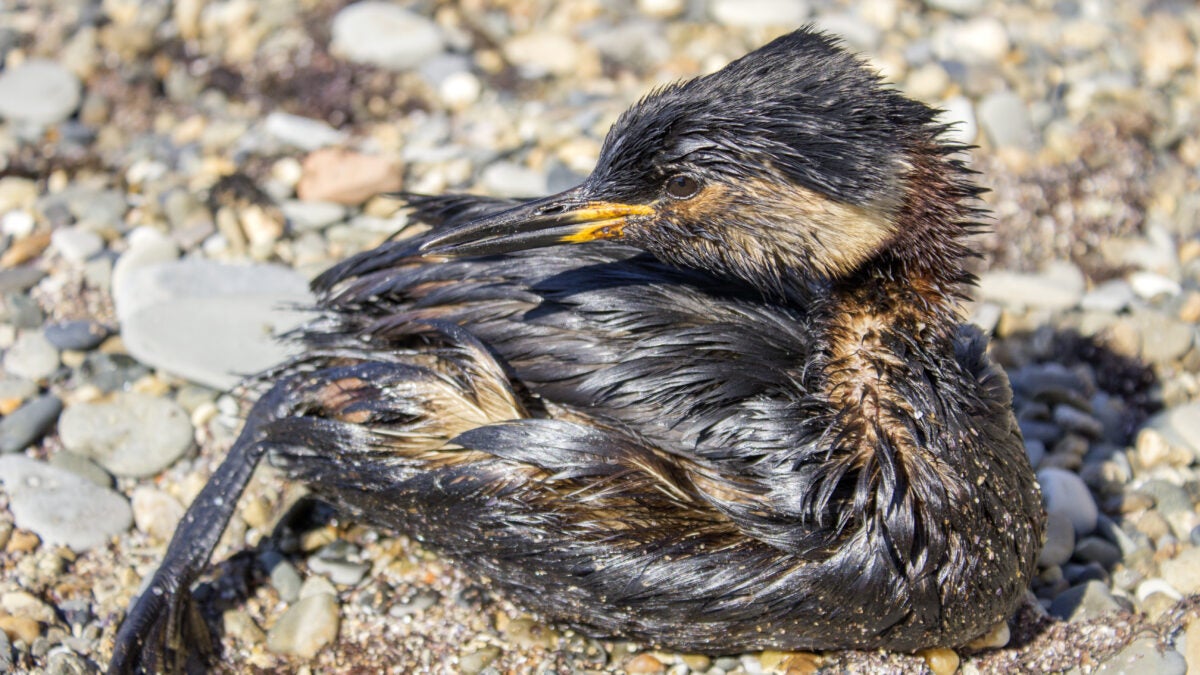
The Exxon Valdez oil tanker spilled 11 million gallons of oil into the Prince William Sound in Alaska in 1989 and killed an estimated:
- 250,000 seabirds.
- 2,800 sea otters.
- 300 harbor seals.
- 250 bald eagles.
- 22 killer whales.
- Billions of salmon and herring eggs.
The Deepwater Horizon oil drilling explosion spilled 134 million gallons of oil into the Gulf of Mexico in 2010 and:
- Killed 11 men.
- Impacted 1,300 miles of Gulf shoreline.
- Killed between 60,000 and 173,000 small juvenile and adult sea turtles.
- Injured nearly 35,000 hatchling sea turtles.
- Killed between 51,600 and 84,500 birds of at least 93 species.
- Harmed hundreds of species of fish, coral reef communities, oysters, scallops, shrimp and crabs.
- Killed billions of shellfish and trillions of larval fish and invertebrates.
NOAA has a story map highlighting one oil spill from each year since OPA passed.
Helton said the impacts that oil spills have on marine environments and how long they last vary widely and depend on the habitat and how persistent the class of oil is. In general, he said gasolines are less persistent than lube oils, which take longer to dissipate. If oil spilled at sea has penetrated far into the shoreline, it can also take longer for environments to recover.
Some newer fuels such as liquefied natural gas are not as “messy” to clean up, Helton said. “I think that’s probably a good trend. Some of those new fuels can be less environmentally harmful.”
Read: Alternative low-carbon fuels predicted to ‘steal headlines’
Recent car carrier sinks, leaks oil
A fire broke out on the Felicity Ace car carrier Feb. 16 about 90 nautical miles south of the Portuguese Azores. The vessel was transporting approximately 4,000 luxury vehicles, estimated to be worth half a billion dollars.
There was “no oil leakage from the vessel” reported until March 2, a day after the vessel sank to the bottom of the Atlantic Ocean, according to the incident information center.
“When the vessel sank, there was a small oil slick seen in the water,” the center said. The oil slick was reportedly “spreading thinly and disappearing gradually” on Monday. The center will continue to monitor the situation.
Southern California pipeline spill
In early October, an Amplify Energy Corp. (NYSE: AMPY) pipeline was found leaking oil off Huntington Beach, California. With a “high degree of confidence,” Amplify estimated that 588 barrels of oil leaked into the ocean. The 16-inch steel pipeline was moved 105 feet from its original position, said Martyn Willsher, CEO of Amplify Energy.
Read: Ship at anchor off California ports may have caused major oil spill
She said: “That 4,000 feet of displacement of the pipeline — it has essentially been pulled like a bowstring that, at its widest point, is 105 feet away from where it was. It’s almost kind of a semicircle.”
There is speculation that a ship’s anchor dragged the pipeline out of position and punctured its walls, causing the spill.
Click here for more FreightWaves articles by Alyssa Sporrer.
Related Stories:
Report: Climate change ‘creating shocks to global trade’
Bunker Holding, Renewable Energy Group partner to advance bio-based diesel in shipping
175 nations endorse resolution to end plastic pollution
Scrubber alternative can now capture carbon emissions on vessels
